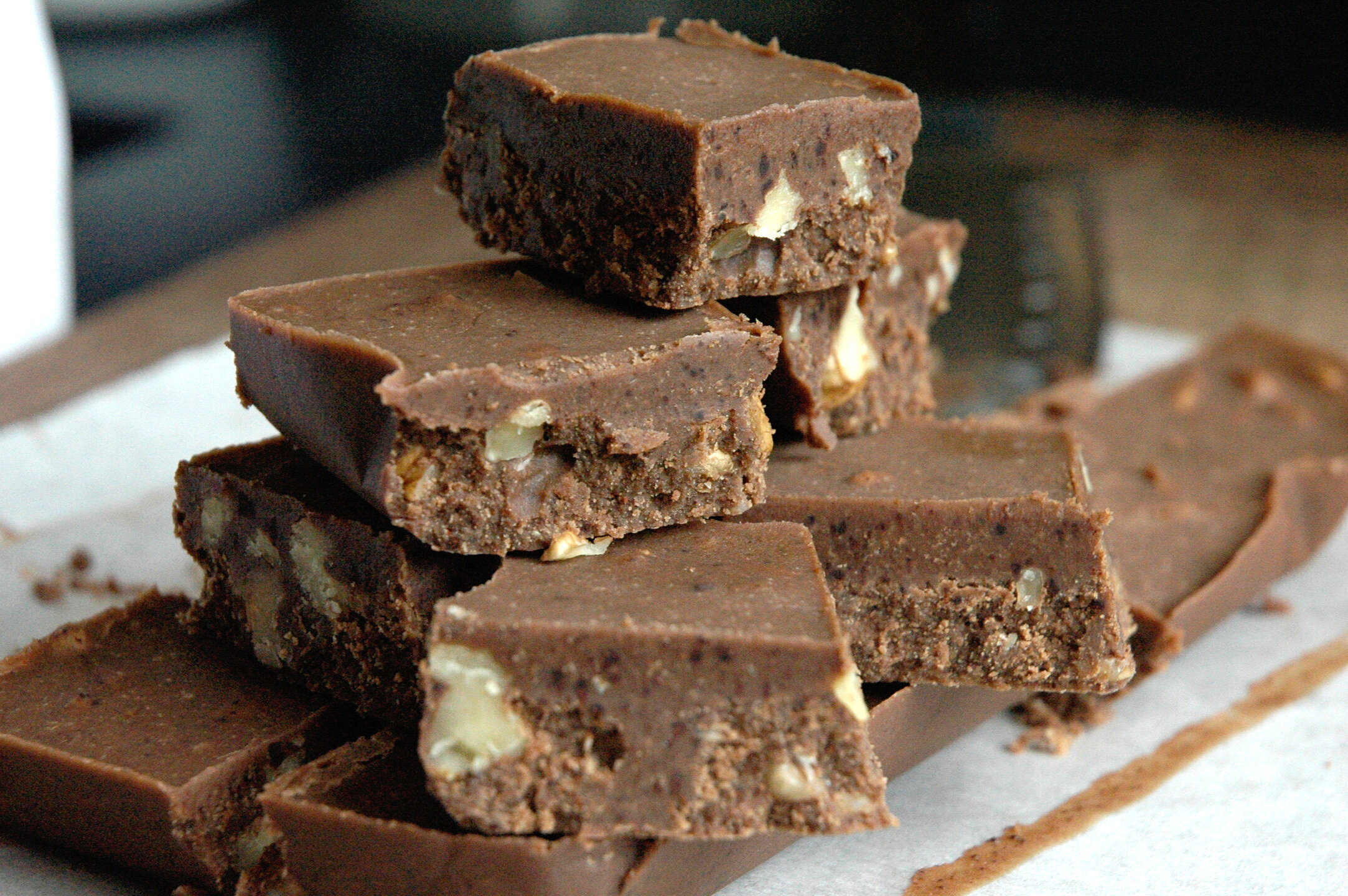Paleo Carob Walnut Fudge
Coconut oil contains medium-chain fatty acids which are digested and absorbed quickly by the enzymes in saliva and gastric juices. This takes some of the load off of the pancreatic enzymes and digestive system. MCFAs are a quick supply of energy to the body and are a great option for diabetic purposes and people with fatty acid absorption issues. Coconut oil has been shown to have the potential to protect again heart disease, cancer, and diabetes (1).
Carob is mineral-rich with calcium, iron, potassium, magnesium, sodium, copper, manganese, and zinc. It also contains polyphenols and antioxidants, has anti-diarrhea, anti-bacterial, anti-inflammatory, anti-diabetic, and hypoglycemia activities (2). It has a glycemic load of 10 making it a good low glycemic index dessert option (3).
PALEO CAROB WALNUT FUDGE Makes: 12 squares
2 Tablespoon coconut oil
1/4 cup coconut butter
1 tablespoon grass-fed goat or cow butter
1/3 cup sunflower seed butter
1/4 tsp. salt
1/2 teaspoon ground cinnamon
1/4 cup roasted carob powder
1/2 teaspoon vanilla flavoring
1/4-1/2 teaspoon vanilla stevia (optional)
1/2 chopped, walnuts, soaked, dried, and chopped
Line a 9x5 inch bread pan with parchment paper.
In a double boiler melt together the first six ingredients, coconut oil, coconut butter, goats milk butter, salt, and cinnamon.
After they have melted mix in the carob, vanilla, and stevia. When they are thoroughly combined, stir in the walnuts.
Spoon mixture into the pan and smooth out into the corners with a spatula. Refrigerate for 30 minutes before cutting into one inch cubes.
Store any leftovers in an airtight container in the refrigerator for a week or in the freezer for several weeks.
Boateng, L., Ansong, R., Owusu, W. B., & Steiner-Asiedu, M. (2016). Coconut oil and palm oil's role in nutrition, health and national development: A review. Ghana medical journal, 50(3), 189–196. https://www.ncbi.nlm.nih.gov/pmc/articles/PMC5044790/
Rtibi K, Selmi S, Grami D, et al. (2017). Chemical constituents and pharmacological actions of carob pods and leaves (Ceratonia siliqua L.) on the gastrointestinal tract: A review. Biomed Pharmacother. 93:522‐528. https://pubmed.ncbi.nlm.nih.gov/28686965/
Fuganti Campos, L., Ramos Dorneles, M., & Carneiro Hecke Krüger, C. (2014). Glycemic response to carob (ceratonia siliqua L) in healthy subjects and with the in vitro hydrolysis index. Nutricion hospitalaria, 31(1), 482–487. https://doi.org/10.3305/nh.2015.31.1.8011

